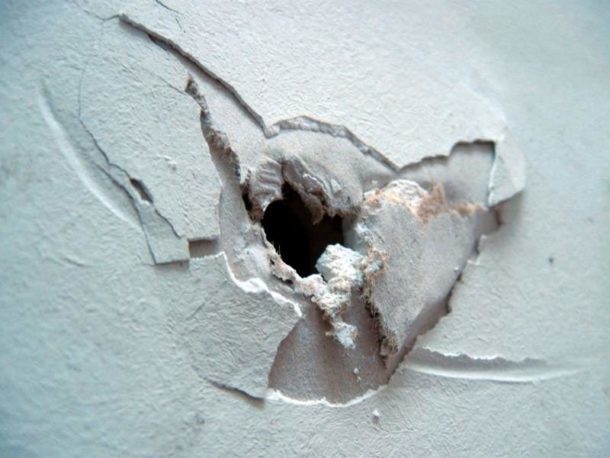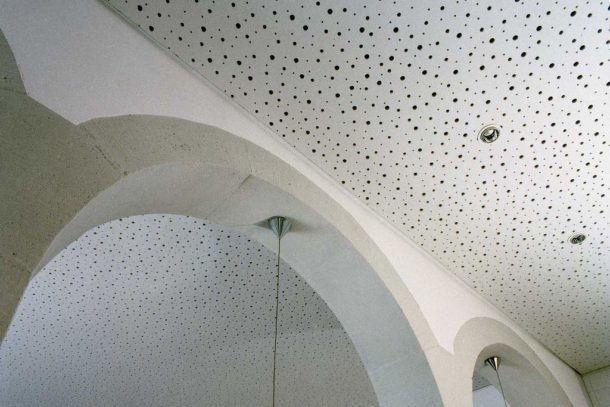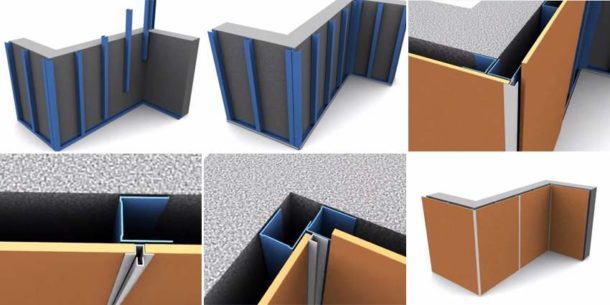
Mark and concrete class determine its strength
Content
- 1 The use of concrete in construction
- 2 Effect of composition components and technological features of the concrete strength
- 3 Concretes and their classification
- 4 Table concrete brands and their characteristics
- 5 Mark concrete and concrete class. Table based marks and grades
- 6 frost resistance of concrete
The use of concrete in construction
The range of contemporary use of different concrete mixes in construction is growing. Concrete is considered a promising high-strength grades, as well as a special concrete with the following technical parameters: durability, low sediment, frost resistance, heat resistance, stiffness, resistance to cracking.
The main application of concrete - is prefabricated and monolithic concrete and reinforced concrete structures and buildings. Each form of construction (foundations, columns, walls, etc.) should be used and the concrete of the corresponding class brand. Their characteristics are provided the construction site project.

Concrete - foundation construction
Grade of concrete - is the basic indicators of its compressive strength. The higher their degree, the higher the requirements to the strength of concrete.
Table corresponds to a concrete class, and the scope of its use:
| Scope of use | Solid foundations in dry soils | Solid foundations in wet soil | Solid foundations in saturated soils | Preparation for floors |
| Consistency of mix: | strict | |||
| Class (B) | 7,5 | 10 | 15 | 12,5 |
| Scope of use | Exterior and basement stairs | septic Tank, Cesspools | Floor slabs, Beams with a rare reinforcement | floor slabs, beams with frequent reinforcement |
| Consistency of mix: | plastic | |||
| Class (B) | 7,5 | 15 | 20 | 22,5 |
Effect of composition components and technological features of the concrete strength
Concrete strength depends on the components involved in the preparation of a mixture of:
- cement. The amount of cement contained affects the strength of the concrete to a certain point. After that, the strength values are insignificant, and other characteristics of concrete (creep, shrinkage), conversely, become worse. In this connection, the quantitative composition of the cement in the concrete cube should not exceed 600 kg. The higher the grade cement contained in the concrete, so it is more durable;
Useful advice!Preparing a concrete mix by yourself, you should use the brand cement twice superior grade of concrete.
- water-cement unit. Solidification with cement concrete takes place with the participation of water from 15 to 25%. Workability mixtures is possible, usually at 40 - 70%. The excess of water favor the formation of pores and, consequently, the compressive strength decreases. Concretes with a small water-cement ratio much faster gaining strength;
- placeholders. Small fractions of aggregates, the presence in their structure of dust and clay, organic inclusions adversely affect the strength of the concrete. large fractions of aggregates with cement grip positively affect the strength;

Mark concrete is important for the strength of reinforced concrete structures
- mixing. Compressive strength is also dependent on how carefully the components will be mixed concrete and of whether they are mixed on what equipment. Not the last role is played by a seal - increasing the average density value of 1%, the rate of strength increase to 5% (on 1 cubic mixture);
- age hardening and temperature conditions. The increase in compressive strength over time is influenced mineral cement structure - various different cements contribute to increase in strength. The optimum temperature for the hardening of the concrete mix temperature is 15 - 20 ° C, the degree of humidity - from 90 to 100%. In order to provide sufficient moisture for curing, it is advisable to shelter concrete film. hardening hardly occurs at a temperature below zero. To achieve lower the freezing temperature of water by using special additives.
Concretes and their classification
As used in the concrete component binder mixture is divided into cement, lime, plaster, asphalt, lime, clay and others.

The presence in the composition of the filler and organic dust inclusions reduces the strength of the concrete
The use of various fillers concrete divides into types:
- heavy (gravel, gravel from dense rocks, used in concrete, and w / w designs);
- especially heavy (iron ore, barite is used for military, nuclear power plants, landfills);
- light (natural slag pumice, have been used in coatings and enclosures);
- particularly the lungs (foam or aerated concrete).
By the properties of concrete are divided into waterproof, frost-resistant and fire-resistant, the degree of density of concrete separates them on hard and plastic.

In every form of construction it is necessary to apply the appropriate concrete class and brand
Table concrete brands and their characteristics
To choose the right concrete mix, you must know the names and classes of concrete produced by a certain type of work. Apply concrete more durable than required by design, is not rational. Basically the concrete used for the construction, do not exceed the compressive strength of the brand 500.
Consider the table "concrete and concrete-end brands, depending on the use of ready-mix":
| Mark and concrete class | Main application |
| M100, (B7.5) | Work preparatory to filling of the foundation slabs, curbs, structural insulation as reinforcement to the backsheet |
| M150 (V12,5) | Tracks in suburban areas, small area, pouring monolithic slab foundation |
| M200 (B15) | For foundation of a private house, blind area, Strip foundation, a pillow under the road surface, the screed floor |
| M250 (B20) | The device is the foundation for a private house, stairs, small slabs, railings, fences, outbuildings |
| M300 | Capital construction of a private house: walls, floors, foundations |
| M350 | Foundations of multi-storey buildings, beams, floors, columns |
| M400 | Facilities hydraulic destination, bridges, warehouses, military installations |
From the table we know what grade of concrete for the foundation can be used for building a house in the private sector.
If you are planning a small outbuilding, it is possible to use a mixture with a low index (M200) mark the concrete. For the foundation of a private house, which has more than one floor, it has been used for higher grade (M250, M300).
Useful advice!When the device of the tape base except mark concrete, consider the characteristics of the ground in which it is located.

The higher the grade and the concrete grade, the higher the compressive strength
Mark concrete and concrete class. Table based marks and grades
Brand concrete is determined based on the characteristics of the binder component, water-cement ratio and density of the filler. Concrete is classified into normal and easy.
Related article:
Table "on concrete proportions 1m³." Quality concrete mixes.
Composition of the concrete mortar. Strength values. Conformity marks implementation of concrete. Calculation of the mixture ingredients. Preparation of the solution.
Table conformity marks and concrete classes:Consider Us brand and the concrete class. Table corresponding to the brand and the concrete class will translate the brand into the classroom and vice versa.

Table conformity marks and concrete classes
Compressive strength, measured in MPa, is assigned to the class of concrete. Thus, determination of B20 shows that the letter B - class designation, the numeral 20 - the test cube withstand pressure of 20 MPa.
Conformity of concrete compressive strength of concrete in MPa class brands assigned technical documentation conditions.
Below are two tables "Class concrete compressive strength in MPa."
Table №1 - 4.5 (MPa) to 32.7 (MPa)

The concrete class of compressive strength of 4.5 to 32.7 MPa
Table №2 - from 39.2 (MPa) to 78.6 (MPa)

The concrete class of compressive strength of 39.2 to 78.6 MPa
frost resistance of concrete
Under the concrete frost resistance possibility to understand the material undergoing repeated freezing and thawing, without being destroyed or losing their compressive strength.
The ability of water at low temperatures to expand, filling voids material leads to its destruction. The higher the porosity of the concrete, the more water will fill the voids. Hence, frost indicator depends on the density and structure of the material.

The degree of density of concrete mixes divides them into rigid and plastic
Frost resistance of concrete - a figure that is taken into account especially in climatic zones where concrete structures repeatedly frozen and thawed. Then there is the risk of losing their bearing qualities and defects.
The reason for the destruction of concrete products - a brand that does not meet the standards of frost. If the grade of concrete frost resistance is chosen correctly, the concrete construction will last more than a century. For concrete with high resistance to frost main indicators, besides the presence of cement, are cement brand, water-cement factor solidification conditions mixtures and other criteria.

The optimum temperature for the solidification of the concrete mix 15 - 20 ° C
Useful advice!Obtaining a higher grade of concrete in hardiness It facilitates the addition of a mixture of antifreeze additives (PMD). their function It is to reduce the required amount of water and concrete compaction.
Frost designated by letter F and reference numeral (50 to 100), where the numbers correspond to the number of periods of freezing and thawing of concrete structures in which their properties deteriorate.
High brand strength corresponds to a higher grade of concrete frost resistance.
Table relation grade, class, and frost resistance of concrete:

The ratio of the brand, class and frost resistance of concrete
Using the table of brands and classes of concrete, as well as their characteristics can be obtained high quality, strong and durable concrete structures.


